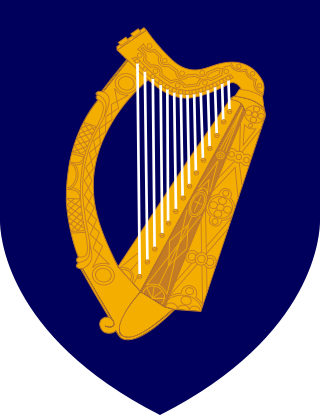Res ipsa loquitur is a doctrine in common law and Roman-Dutch law jurisdictions under which a court can infer negligence from the very nature of an accident or injury in the absence of direct evidence on how any defendant behaved in the context of tort litigation. Although specific criteria differ by jurisdiction, an action typically must satisfy the following elements of negligence: the existence of a duty of care, breach of appropriate standard of care, causation, and injury. In res ipsa loquitur, the existence of the first three elements is inferred from the existence of injury that does not ordinarily occur without negligence.
In some common law jurisdictions, contributory negligence is a defense to a tort claim based on negligence. If it is available, the defense completely bars plaintiffs from any recovery if they contribute to their own injury through their own negligence.
Comparative negligence, called non-absolute contributory negligence outside the United States, is a partial legal defense that reduces the amount of damages that a plaintiff can recover in a negligence-based claim, based upon the degree to which the plaintiff's own negligence contributed to cause the injury. When the defense is asserted, the factfinder, usually a jury, must decide the degree to which the plaintiff's negligence and the combined negligence of all other relevant actors all contributed to cause the plaintiff's damages. It is a modification of the doctrine of contributory negligence that disallows any recovery by a plaintiff whose negligence contributed even minimally to causing the damages.
Ex turpi causa non oritur actio is a legal doctrine which states that a plaintiff will be unable to pursue legal relief and damages if it arises in connection with their own tortious act. The corresponding Ex turpe causa non oritur damnum, "From a dishonourable cause, no damage arises" is a similar construction. Particularly relevant in the law of contract, tort and trusts, ex turpi causa is also known as the illegality defence, since a defendant may plead that even though, for instance, he broke a contract, conducted himself negligently or broke an equitable duty, nevertheless a claimant by reason of his own illegality cannot sue. The UK Supreme Court provided a thorough reconsideration of the doctrine in 2016 in Patel v Mirza.
In the English law of tort, professional negligence is a subset of the general rules on negligence to cover the situation in which the defendant has represented him or herself as having more than average skills and abilities. The usual rules rely on establishing that a duty of care is owed by the defendant to the claimant, and that the defendant is in breach of that duty. The standard test of breach is whether the defendant has matched the abilities of a reasonable person. But, by virtue of the services they offer and supply, professional people hold themselves out as having more than average abilities. This specialised set of rules determines the standards against which to measure the legal quality of the services actually delivered by those who claim to be among the best in their fields of expertise.

Morguard Investments Ltd v De Savoye, [1990] 3 SCR 1077 is the leading decision of the Supreme Court of Canada on the enforcement of extraprovincial judgments. The Court held that the standard for enforcing a default judgment from a different province is not the same as if it were from another country; rather the Court adopts the test from Indyka v Indyka, [1969] 1 AC 33 (HL) and Moran v Pyle National (Canada) Ltd, [1975] 1 SCR 393 where there must be a "real and substantial connection" between the petitioner and the country or territory exercising jurisdiction.

Canadian tort law is composed of two parallel systems: a common law framework outside Québec and a civil law framework within Québec. Outside Québec, Canadian tort law originally derives from that of England and Wales but has developed distinctly since Canadian Confederation in 1867 and has been influenced by jurisprudence in other common law jurisdictions. Meanwhile, while private law as a whole in Québec was originally derived from that which existed in France at the time of Québec's annexation into the British Empire, it was overhauled and codified first in the Civil Code of Lower Canada and later in the current Civil Code of Quebec, which codifies most elements of tort law as part of its provisions on the broader law of obligations. As most aspects of tort law in Canada are the subject of provincial jurisdiction under the Canadian Constitution, tort law varies even between the country's common law provinces and territories.

Kamloops v Nielsen, [1984] 2 SCR 2 ("Kamloops") is a leading Supreme Court of Canada decision setting forth the criteria that must be met for a plaintiff to make a claim in tort for pure economic loss. In that regard, the Kamloops case is significant because the Supreme Court adopted the "proximity" test set out in the House of Lords decision, Anns v Merton LBC. Kamloops is also significant as it articulates the "discoverability principle" in which the commencement of a limitation period is delayed until the plaintiff becomes aware of the material facts on which a cause of action are discovered or ought to have been discovered by the plaintiff in the exercise of reasonable diligence. This was later adopted and refined in Central Trust Co v Rafuse. Finally, Kamloops develops the law governing circumstances where a plaintiff can sue the government in tort.

BG Checo International Ltd v British Columbia Hydro and Power Authority, [1993] 1 SCR 12 is a leading decision by the Supreme Court of Canada. The Court held that there is a prima facie presumption that a claimant is able to sue concurrently in tort and contract where sufficient grounds exist. Still, liability in tort will still be subject to an exemptions or conditions set out in a contract.

London Drugs Ltd v Kuehne & Nagel International Ltd, [1992] 3 SCR 299 is a leading decision of the Supreme Court of Canada on privity of contract.

Martin v. Herzog, Ct. of App. of N.Y., 228 N Y. 164, 126 N.E. 814 (1920), was a New York Court of Appeals case.
Economic loss is a term of art which refers to financial loss and damage suffered by a person which is seen only on a balance sheet and not as physical injury to person or property. There is a fundamental distinction between pure economic loss and consequential economic loss, as pure economic loss occurs independent of any physical damage to the person or property of the victim. It has also been suggested that this tort should be called "commercial loss" as injuries to person or property can be regarded as "economic".

Letang v Cooper[1964] EWCA Civ 5 is an English Court of Appeal judgment, by which it was decided that negligently caused personal injury cannot be recovered under the trespass to the person, but the tort of negligence must be tried instead.

Williams v Natural Life Health Foods Ltd[1998] UKHL 17 is an important English tort law, company law and contract law case. It held that for there to be an effective assumption of responsibility, there must be some direct or indirect conveyance that a director had done so, and that a claimant had relied on the information. Otherwise only a company itself, as a separate legal person, would be liable for negligent information.

Hall v Hebert is a leading tort law case decided by the Supreme Court of Canada on the defences of contributory negligence and ex turpi causa non oritur actio.

Commonwealth v Verwayen, also known as the Voyager case, is a leading case involving estoppel in Australia. Bernard Verwayen sued the Australian government for damages caused by a collision between two ships of the Australian Navy. A representative of the Government initially indicated to Bernard Verwayen that the Government would not raise the statute of limitations as a defence to their negligence. In court however, the Government relied on this defence. While the decision of the High Court was split, a majority of judges found that the Government could not rely on this statement as a defence. Justices Toohey and Gaudron came to this conclusion on the basis that the Government had waived their right to rely on this defence. However, Justices Deane and Dawson came to this conclusion under the doctrine of estoppel, which provides that a defendant can not contradict a previous representation or promise made that has established an assumed state of legal affairs. This case is most frequently referred to in relation to its influence on the doctrine of estoppel.

Venning v Chin (1974) 10 SASR 299 is a Supreme Court of South Australia full court judgment, by which it was decided that in trespass cases, the onus lies on the defendant to disprove fault. However, for injuries caused in highway accidents, the onus is on the plaintiff to prove fault on the part of the defendant.

Chapman v Hearse is a significant case in common law related to duty of care, reasonable foreseeability and novus actus interveniens within the tort of negligence. The case concerned three parties; Chapman who drove negligently, Dr Cherry who assisted him on the side of the road, and Hearse who, in driving negligently, killed Dr Cherry while he was assisting Chapman. In the Supreme Court of South Australia, Hearse was found liable for damages to Dr Cherry's estate under the Wrongs Act 1936. Hearse sought to reclaim damages from Chapman due to his alleged contributory negligence; Chapman was found liable to one quarter of the damages. Chapman appealed the case to the High Court of Australia on August 8, 1961, but it was dismissed as the results of his negligence were deemed reasonably foreseeable. A duty of care was established between Chapman and the deceased and his claim of novus actus interveniens was rejected. Dr Cherry was considered a 'rescuer' and his respective rights remained.

Soldiers, Sailors, Airmen and Families Association v Allgemeines Krankenhaus Viersen GmbH[2022] UKSC 29, [2022] 3 WLR 1111 is a judicial decision of the Supreme Court of the United Kingdom in relation to the proper law to govern contribution claims in cross-border torts.

Gough v Neary & Cronin [2003] IESC 39; [2003] IR 92; [2004] 1 ILRM 35 is an Irish Supreme Court case in which the court ruled that a claim against a gynecologist for performing an unnecessary hysterectomy was no longer legally enforceable owing to a prescribed period of limitation having lapsed under the Statute of Limitations (Amendment) Act 1991. However, the claim could still be brought under tort; this case highlighted that the three year limit for personal injury starts when the individual realizes the injury was due to negligence, rather than the date of the occurrence of the injury. Thus, the period that a person could file a claim was, in practical terms, extended.









